You’ve probably noticed that the Amazon Rainforest packing list is the most important thing when planning your trip to the rainforest, especially because of the weather. Sometimes it can dawn with clear skies and lots of sunshine, but other times rain can accompany you for days. If you are planning your trip to the Amazon Rainforest, there are some key facts you can’t overlook.
During a single day, you can enjoy clear, sunny skies in the morning, sudden showers in the afternoon and cool temperatures at night. No matter what you do, humidity will be part of your experience: your shoes will get soaked and the sun can be relentless at midday. Tours departing from Amazon lodges start early, when the fog is thick and the jungle wakes up alive before the heat of the day causes everything to seek shade. So take these conditions seriously and get ready for the magic of the jungle with the best Amazon package list!
Why is an Amazon rainforest packing list important?
The Amazon is unpredictable, wild and magical. One minute it’s hot enough to melt, and the next you’re in the pouring rain. You walk along trails that get muddy in seconds, cross rivers by boat and, of course, insects are unforgiving. That’s why carrying a well thought-out packing list is almost a necessity.
When you are prepared, the experience changes completely. Instead of suffering from soggy shoes or every bite, you focus on the good stuff: watching a group of monkeys crossing the treetops, listening to the song of a bird you’ve never heard before, or simply enjoying the green silence that covers everything. A good list helps you move comfortably, safely, without complications.
And let’s face it: the jungle always brings surprises. But it’s one thing to adapt calmly, and another to have a hard time for not having brought the basics. Light clothing that dries quickly, repellent with a good percentage of DEET, a headlamp and that little dry bag so that your cell phone doesn’t become a wet souvenir… it all adds up.
You might be interested: Inti Raymi in Cusco 2025: The magic festival of the Sun
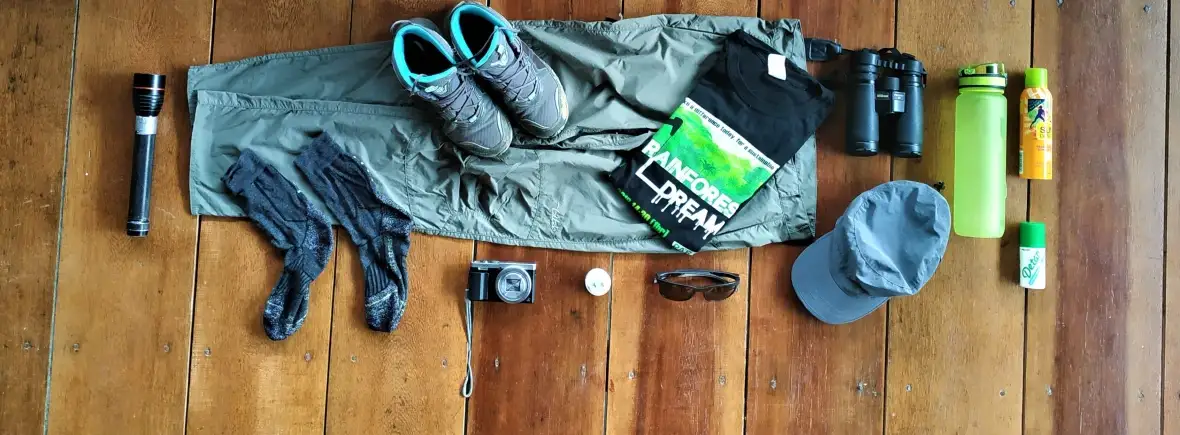
How to choose the best backpack for your trip to the Amazon?
Are you planning to carry everything in a backpack? Maybe it’s best, in the Amazon it is difficult to walk with suitcases so choosing the right backpack is key to enjoy your adventure in the Rainforest without worries. Not all backpacks are made for the jungle. And believe us, when you face the humidity, heat and climate changes typical of the Amazon, choosing the wrong one can become a problem. So, before packing everything with enthusiasm, think carefully about which backpack you are going to take: it will be your adventure companion, the one that will carry the essentials, and the last thing you want is that it leaves you bad in the middle of the forest.
The first thing is the size. For a short trip of 3 to 5 days, a backpack of 40 to 50 liters is more than enough. If you’re going for longer, consider a 60 liter backpack. Make sure it has adjustable straps, lumbar support and, if possible, ventilation in the back. Waterproof? Better. If not, bring a rain cover. It doesn’t just rain in the jungle: there’s also constant humidity that gets everywhere.
What should you consider when choosing your jungle backpack?
- Capacity: 40-60 liters depending on the length of the trip.
- Comfort: Padded and adjustable straps, with lumbar support.
- Material: Durable and lightweight; water repellent is best.
- Multiple access: Well-distributed external and internal pockets.
- Waterproof cover included: Ideal to protect everything in case of rain.
- Back ventilation: To reduce sweat and heat discomfort.
You might be interested: Amazon Jungle Mysteries: Discover the secrets of the peruvian rainforest
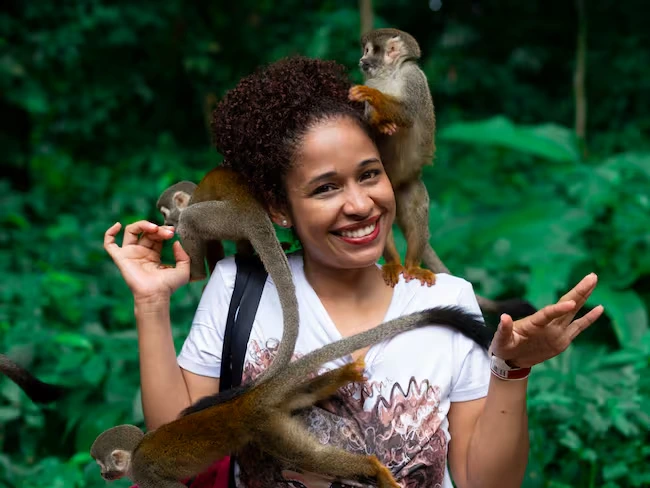
Amazon Rainforest Packing List: Essentials you can’t forget
If you want to fully explore the Amazon rainforest then you must know the secret to make your trip the best: pack well. In this corner of the world where humidity, heat, rain and insects are part of everyday life, knowing what to bring makes all the difference. But don’t worry, this guide will help you prepare your Amazon rainforest packing list without stress and with all the essentials to experience the rainforest in comfort and safety.
1. Clothing suitable for the Amazon climate
In the Amazon, you’re going to sweat. A lot. That’s why it’s ideal to wear light, quick-drying clothing that protects you from both the sun and insects.
- Long-sleeved shirts made of cool, breathable fabric.
- Long trekking pants, detachable if possible.
- Breathable T-shirts (bring several!).
- A waterproof jacket or poncho for tropical rains.
- Fleece or light sweatshirt for the evenings.
- Comfortable, quick-drying underwear.
- A change of dry clothes in a plastic bag (it can save the day).
2. Hiking shoes and accessories
You will be walking on wet, muddy and sometimes slippery trails. Your footwear has to accompany you, not play against you.
- Waterproof hiking boots with good ankle support.
- Sport sandals to rest in the lodge or use in showers.
- Long cotton socks (take several, you will be surprised how many you need).
- If you do long excursions, also take gaiters or anti-spine socks.
3. Personal and hygiene items
Here the motto is: practical, ecological and as little bulky as possible.
- Toothbrush and toothpaste.
- Biodegradable soap and shampoo.
- Microfiber towel (light and quick-drying).
- Toilet paper (in a separate bag).
- Deodorant, comb, feminine products if applicable.
4. Sun and insect protection
The sun in the jungle burns more than you can imagine, and mosquitoes…. well, they are very insistent locals.
Include in your Amazon rainforest packing list:
- Sunscreen (water resistant, minimum SPF 50).
- Repellent with at least 25% DEET or icaridin.
- Sunglasses with UV filter.
- Wide-brimmed hat or cap.
- Lip balm with sunscreen.
5. Documents and important items
Even if you are surrounded by nature, papers are still important.
- Original passport (and a copy).
- Vaccination card (yellow fever if requested).
- Travel insurance.
- Cash in soles and/or dollars.
- Bank card (they do not always work in remote areas, but better to be safe).
- SIM card or GPS device if traveling on your own.
6. Technology
Less is more. But there are things that make the difference between an ordinary trip and a great adventure.
- Camera or cell phone with a good camera.
- Portable charger (power bank).
- Headlamp (essential!).
- Extra batteries and universal adapter.
- Binoculars (if you are a fan of birds or mammals).
You might be interested: Vaccines for the Amazon Rainforest: What’s Essential for a Trip?
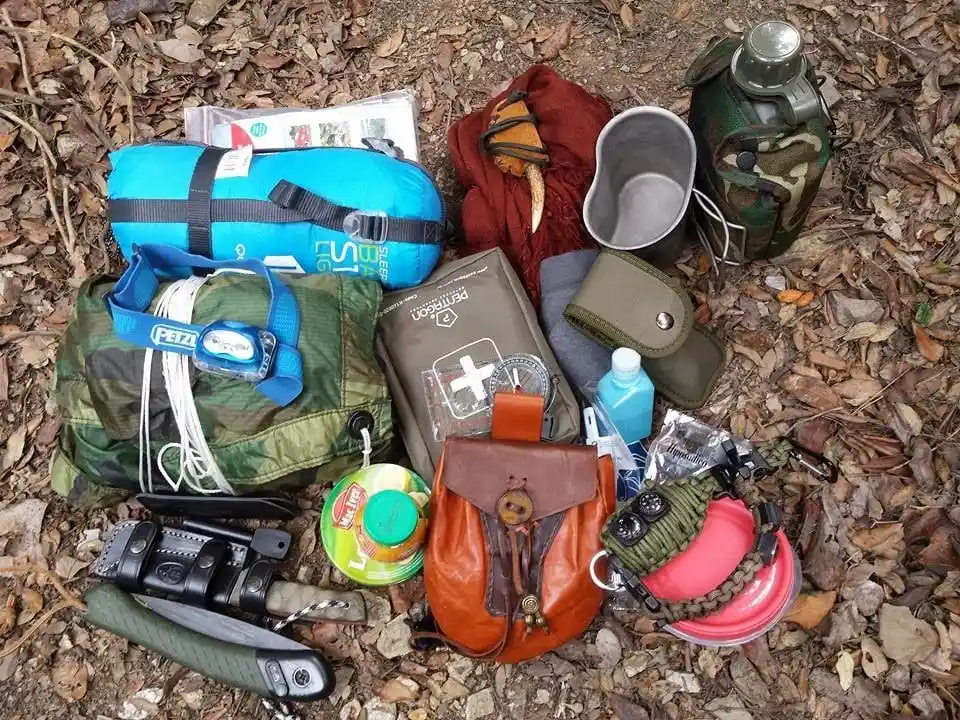
Emergency kit for your Amazon Rainforest packing list
When you venture into the Amazon, it’s better to be safe than sorry. Unlike other destinations, here you won’t always have a pharmacy or store nearby, and any unforeseen event – no matter how small it may seem – can quickly become complicated. That’s why putting together a well-thought-out emergency kit is not just a good idea: it’s almost mandatory. From an unexpected sting to a sprained ankle in the middle of a hike, carrying just enough can make a big difference.
You don’t need to carry half a suitcase’s worth of medicine, but you do need to include the basics. Think of real-life situations: a blister on your heel? a stomachache from something you ate? a sudden rain that soaked your passport? With a small first aid kit, a flashlight and a couple of key tools, you can continue to enjoy your trip without a hitch. Plus, having everything on hand gives you that peace of mind that makes your trip lighter.
What should your emergency kit include?
- Painkillers (paracetamol, ibuprofen)
- Bandages, gauze, band-aids and disinfectant
- Anti-allergic and diarrhea tablets
- Water purification tablets or portable filter
- Headlamp with extra batteries
- Utility knife and adhesive tape
- Whistle and waterproof bag for documents
- Personal medication and repellent with DEET
What to wear in the amazon rainforest?
If you wear the right clothes and accessories, you’ll forget about the heat, the mosquitoes and the sweat. And that means you’ll focus on what really matters: experiencing the Amazon to the fullest. So you should take this into account for your Amazon rainforest packing list for your next trip to the jungle.
Top
In the Amazon, the heat is constant, but that doesn’t mean walking around in suspenders. Quite the opposite: the key is to wear lightweight, long-sleeved clothing that protects you from mosquitoes without cooking you.
- Long-sleeved shirts made of technical fabric (dry-fit or ripstop type): they are cool, dry quickly and wick away sweat.
- Light and neutral tones: Dark colors attract more mosquitoes. Beige, olive green or khaki camouflage well with nature.
- Avoid pure cotton: It gets soaked with sweat and takes ages to dry. A bad companion in humid environments.
- Ultra-thin thermal undershirts (optional): If your body is very sensitive to heat and humidity, they help keep you dry.
- Little-mentioned fact: Some brands offer shirts treated with permethrin, an insect repellent built into the fabric that lasts for several washes. Very useful if you visit areas with high insect exposure.
Bottom
Although you might be tempted to wear shorts, in the Amazon that’s often a mistake. Bushes scratch, bugs are unforgiving, and mosquitoes seem to have GPS for your calves.
Carry them in your backpack:
- Removable or convertible trekking-type pants: They give you versatility if you need to air out midday.
- Flexible and resistant fabrics: Ideally with anti-UV and water repellent treatment.
- Avoid thick jeans or pants: They don’t dry quickly, and with sweat they end up causing chafing.
- Real jungle tip: Some experienced travelers carry a spare pair of old pants for very muddy treks or river crossings. This way you don’t ruin the good one and can throw it away if it becomes unusable.
Feet
Your feet will thank you for a lifetime for good footwear. In the jungle there is mud, roots, rocks, wet branches and even streams. There is no room for mistakes here.
- Waterproof hiking boots: with good traction, ankle support and breathable materials.
- Grippy sandals or closed crocs: For the lodge, showers or if you must cross wet areas without soaking your boots.
- Quick-drying long socks: Take at least 2 pairs per day. Merino wool ones are an excellent choice even if it’s hot, because they don’t hold moisture or odor.
- Pro tip: Use an antifungal powder on your feet every night. It helps prevent fungus and chafing, a common occurrence in tropical climates with wet feet.
accessories for your Amazon rainforest packing list
You don’t need a lot, but you need the right things. A few of these items make all the difference between a long-suffering hike and a comfortable experience.
- Wide-brimmed hat or cap with neck covering: The sun hits hard even if you don’t feel it.
- Polarized sunglasses: For boating or to avoid glare on open hikes.
- Buff or multi-purpose scarf: It serves to cover you from the sun, dust, as a towel, or even as an improvised patch.
- Lightweight gardening gloves (yes, seriously): If you will be hiking in dense vegetation, they help you to hold on without cutting yourself.
- Vest with pockets or waterproof kangaroo: To carry the essentials (repellent, snacks, water).
Things prohibited from taking to the Amazon in 2025
Although it may seem that anything goes in the jungle, the truth is that there are items that are strictly forbidden, either for reasons of environmental conservation, personal safety or local regulations. Here we tell you what not to pack in your backpack if you are about to embark on an adventure in the Peruvian Amazon in 2025.
1. Single-use plastics
For some years now, it has been forbidden to enter protected areas in Peru (such as the Tambopata National Reserve or Manu National Park) with plastic bags, disposable bottles or technopor containers. It is best to use reusable water bottles and cloth bags.
2. Drones without authorization
If you were planning to record everything from the air, keep in mind that drones are only allowed with a prior permit issued by SERNANP and must be used outside of sensitive wildlife areas. If you carry it without a permit, it can be confiscated.
3. Polluting sprays or repellents with very high DEET
Many traditional repellents damage biodiversity. Choose a natural or biodegradable one. The same goes for sunscreens: they should be ecological, without oxybenzone or octinoxate.
4. Large speakers or devices with loud music
Remember it’s not a party! Excessive noise affects the animals and breaks the immersive experience of being in the jungle. But headphones are recommended if you want to hear something.
You might be interested: Exploring the Biodiversity of Cloud Forest Peru in Manu
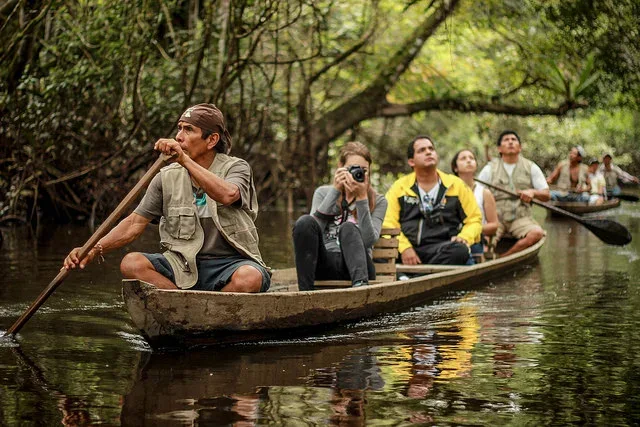
Frequently asked questions about Amazon rainforest packing list
If you have questions about your next trip to the jungle, we’ve shared the best questions and answers to help you clarify your doubts and start packing for your jungle adventure.
What can’t be missing in an Amazon packing list?
Beyond light clothing and repellent, there are basics that make a difference: a headlamp (it’s pitch black at night), a waterproof backpack for daily excursions, and a quick-drying towel. We also recommend carrying waterproof bags to protect your devices from excess moisture and a reusable bottle to keep you hydrated all day.
What clothes should I pack for the Peruvian Amazon?
Pack light, long-sleeved clothing and long trekking pants. Don’t be overconfident about the heat: sleeves protect you from the sun and insects. Ideally, everything should be quick-drying, breathable and in light colors (dark colors attract insects). And don’t forget a light raincoat or poncho: rains can fall at any time, even if the day started with sunshine.
What footwear is recommended for the jungle?
Some Peru travel agencies recommend that Waterproof hiking boots are a must for jungle treks. If the lodge provides them, you can confirm before packing. It is also useful to bring closed sandals or crocs to move around inside the lodge or shower more comfortably and avoid stepping on insects.
What kind of repellent do I need for the Amazon?
Without a doubt, one of the first things you should have on your Amazon rainforest packing list is a repellent with at least 20% DEET or Icaridin, in liquid or spray form. It works best if you apply it directly to clothing as well as exposed skin. If you have sensitive skin, look for dermatological or natural versions (but fortify with citronella).
How do I protect my photographic or electronic equipment from humidity?
The jungle has a humidity that can ruin cameras, cell phones and even books. It is best to pack everything in zip lock bags or in a dry bag. If you’re a photography lover, consider carrying silica in sachets to keep your gear dry inside your backpack.
Can I drink tap or river water?
No. Although some lodges have filtration systems, it is always better to drink bottled water or water treated with purification tablets. Bring your own reusable bottle and refill it from reliable sources. Some treks include boiled or filtered water, our tip: always ask.
What kind of backpack do I need?
For a 7 day stay, ideally a 50 liter main backpack (flexible, not rigid) and a 20-25 liter daypack for hiking. Make sure at least one has a waterproof cover or you can protect it with a dry bag if it rains.
What personal items do travelers not usually carry but should?
One that many forget is a small mirror (in case you need to put on repellent or check for a bite). Another is a buff or multifunctional scarf, which serves to cover you from dust, sun or sweat. And finally, a notebook or travel journal: the jungle inspires and holds stories worth writing down.
How different is it to pack if I travel in rainy season?
The difference is in the amount of spare clothes you should bring. In rainy season (December to March), humidity invades everything and it costs more for clothes to dry. Add a couple of extra T-shirts, quick-drying socks, and a reinforced raincoat, and don’t forget a good poncho!
You might be interested: Preparing for Your First Ayahuasca Ritual Journey
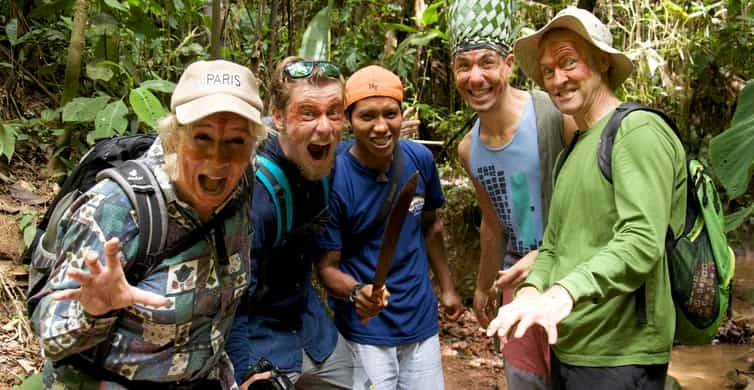
The Amazon rainforest packing list is part of the adventure
Here, climate, vegetation, fauna and even humidity play their own game. That’s why making a good Amazon rainforest packing list is not just a recommendation: it’s the difference between enjoying the trip to the fullest or spending it with discomfort that could be avoided.
From choosing the right clothes, to footwear, personal items and even that emergency kit you hope not to use, each item has a role to play. The jungle is as generous as it is demanding: it gives you unique landscapes, sounds that do not exist anywhere else, and moments that you will remember for the rest of your life. But it also demands respect, preparation and common sense.
So now you know: packing is not just about filling your backpack. It’s about preparing for a deep, real and transformative experience. And if you still have doubts, remember that at Amazon Garden Lodge we are here to guide you every step of the way, even before you set foot in the jungle. Ready to explore the green heart of Peru?



